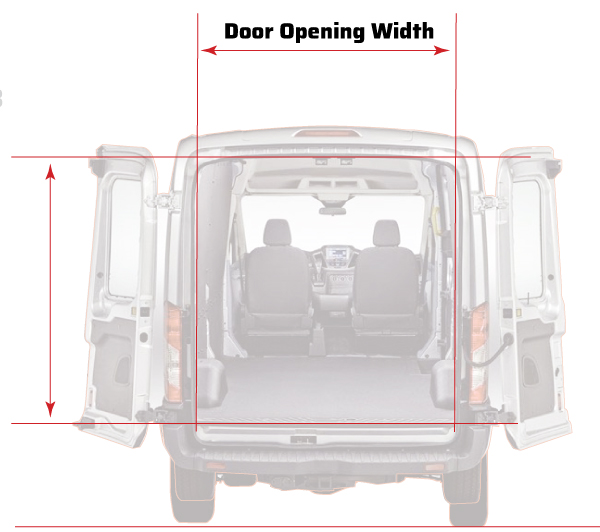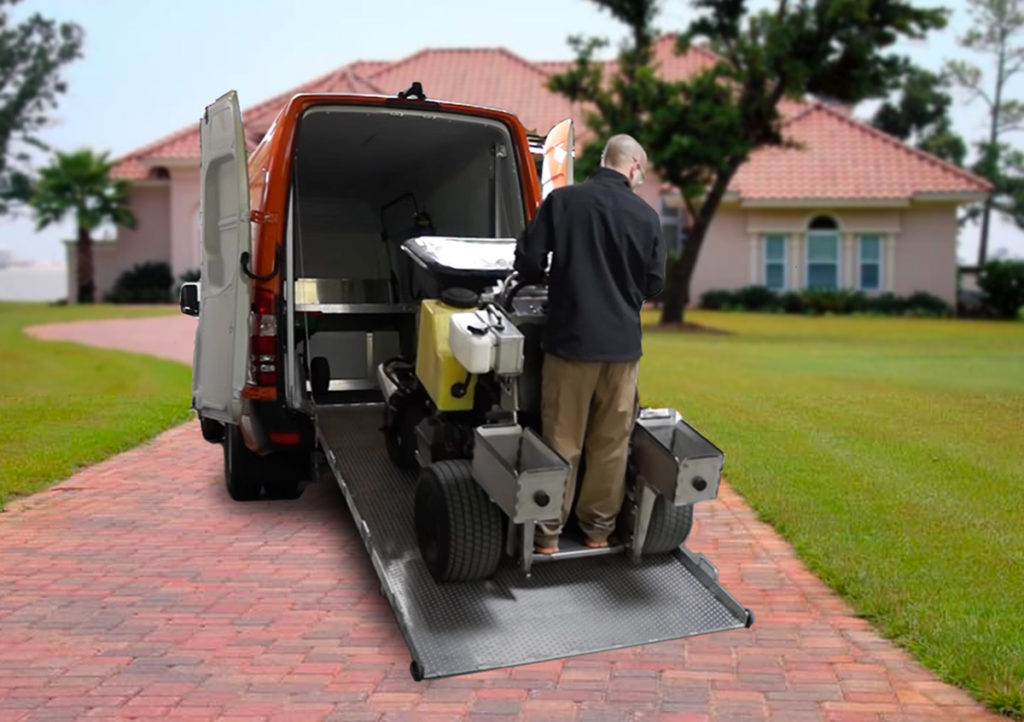You’ve invested a lot into your business, so your heavy equipment needs to be transported safely and efficiently. Your customers are counting on you to get the job done, and you need a solution that will help you more easily move your equipment without damage. Cargo van ramps are more than capable of securely transporting motorized and non-motorized heavy equipment.
A variety of business sectors use cargo van ramps to transport their equipment, including:
- Landscaping
- Disaster restoration
- Cleaning services
- Deliveries
- Construction
Whether you are transporting a large riding lawnmower for a landscaping job, delivering a motorcycle to a customer, or bringing a water vacuum to a basement flood cleanup, your cargo van ramp will allow you to successfully move the equipment while also keeping you safe. Below, we have explored a few factors that will determine the specifications when purchasing a ramp for moving heavy equipment.
Selecting the Right Ramp for Your Equipment
Even though heavy equipment is more easily transported with a van ramp, there are few ramp variations that can make that process safe and efficient for your business. Below are some factors to consider when selecting the best ramp for transporting your equipment.
Width
The width of your cargo van ramp will be determined by the width of your cargo van’s rear door opening as well as the width of the equipment you will be transporting on the ramp. The HandiRamp cargo van ramps are available in 3 standard widths: 36”, 45”, and 52”. It is essential that you choose a width that exceeds the width of your equipment so that it can be moved up and down the ramp safely. To be compatible with the ramp, the total width of your cargo van’s rear door opening must also be at least 9 inches wider than the width of the ramp. This ensures that there is enough space on either side of the ramp for the installation hardware.

Length and Incline
The chosen length of your cargo van ramp will be dependent upon a few factors. Firstly, you must make sure that the ramp will fit inside your cargo van. The best way to determine which ramp lengths will suit your vehicle is to use the cargo van ramp configurator. By entering your van’s information, the configurator will provide you with the ramps that fit your van’s specifications.
Additionally, the length of your cargo van ramp and the load height of your vehicle will dictate the incline of the ramp when in use. HandiRamp recommends at least a 1:4 slope ratio for cargo van ramps, meaning that for every inch of rise, there should be at least 4 inches of ramp. We understand the heavy equipment that you will be transporting is integral to your business’s success, so it is essential that your cargo van ramp keeps both you and your equipment safe.

Depending upon your van’s rear door dimensions, only certain ramp lengths will fit. HandiRamp offers 5 standard ramp lengths: short (7ft), medium (9ft), long (10.5ft), extra long (12ft), and extra extra long (15ft) with the latter two ramps being tri-folds rather than bi-folds. Generally, it is better to use a longer ramp when transporting heavy and/or motorized equipment because it will be easier and safer to move on the gentler slope. For a more in-depth exploration of how the length of your ramp and your vehicle’s load height affects the slope of the ramp, we have a dedicated ramp incline page.
The most important factor when selecting the capacity of your cargo van ramp is that it should be able to support the weight of your heaviest equipment. HandiRamp offers two standard capacity options at 1,000 lbs or 1,500 lbs, which will support virtually any equipment that can be transported by cargo van. The 1,500 lb capacity ramps include a welded center leg that sits where the ramp folds and increases stability. Even though the 1,000 lb capacity ramps will be able to support your cargo, the additional structural support of the 1,500 lb capacity ramp’s center leg may be more ideal for your business.
How to Transport Equipment with Your Cargo Van Ramp
With a plethora of business sectors using ramps with their cargo vans to transport their large equipment, the best way to move different kinds of equipment up and down the ramp may vary. Some equipment, like floor scrubbers or flood water vacuums, may already have attached wheels that allow the equipment to be simply rolled up and down the ramp. Others, like oversized equipment out for delivery, will need to be transported using an appliance hand truck or motorized dolly.
Motorized equipment like commercial lawnmowers or other landscaping equipment can be driven up and down the ramp just as they would be driven on the ground. For these types of equipment, buying a ramp with the most gentle possible incline is suggested.
The patented raised-button surface of HandiRamp’s cargo van ramps provides exceptional traction so that your heavy equipment can be transported safely whether you are walking up and down the ramp or driving the equipment. Unlike lift gates, the surface of our ramps provides traction in rain, snow, sleet, or dirt, delivering confidence that the job will be done safely in any weather condition.
The HandiRamp Difference
HandiRamp is dedicated to providing you with the ramp solution that promotes both safety and efficiency for your business. To view the ramps that will fit your cargo van’s specifications, simply enter your van’s make, model, year, roof height, and wheelbase into our cargo van ramp configurator. If you have any questions about our cargo van ramps, or how you would best transport your equipment with them, give our friendly ramp experts a call at 800-876-7267!
Thom Disch
Award-winning author Thom Disch is owner and CEO of Handi Products that sells a variety of accessibility, commercial, and home products creating a safer environment for their customers. Thom is a leading expert and speaker on slip, trip, and fall injuries in the United States and has been compiling statistics and stories related to this healthcare crisis for ten years. Thom is also a serial entrepreneur and owns several companies and nationally known brands, including Handi-Ramp (handiramp.com), PetSTEP International (Petstep.com), and Industrial Toolz, Inc. (Industrialtoolz.com).


